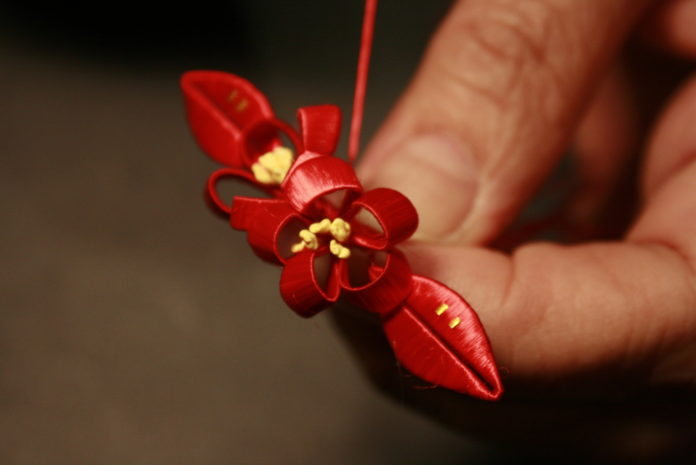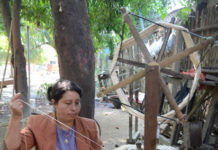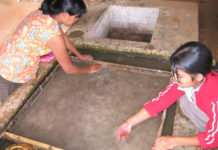The chan-hua (silk flower) crafts combine techniques of paper-cutting, weaving and embroidery. In Taiwan, the Hakka call this craft chan-hua, while the Taiwanese call it chun-zi-hua. The handcrafted flowers are refined and delicate. These silk flowers often often carry auspicious meanings and are associated with festivities in Taiwanese culture.
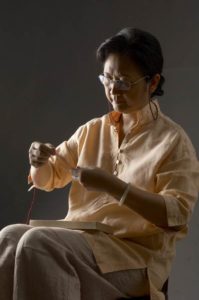
In the offshore island of Kinmen, locals call chun-zi-hua the “auspicious flower.” While for the Taiwanese counterpart, locals often wear big red flower-patterned chun-zi-hua hairpins at weddings. The bride would wear pomegranate-patterned hairpin to symbolize the coming of offspring. For elderly, they would often wear the turtle or deer motifs to symbolize longevity and good fortune. The different motifs found in chun-zi-hua reveal many different auspicious meanings behind them.
In Hakka culture, the chan-hua is also called “thread flower.” The Hakka chan-hua has a variety of forms when it comes to shape. It highlights more ornate decorativeness than the chun-zi-hua counterpart. Hakka uses it for flower offerings in ceremonies and rituals. In everyday use, chan-hua is used for daily attire, such as hairpins for women and children’s hat decoration features. In addition, chan-hua is closely associated with rituals, weddings and fertility-related etiquette.
The chan-hua creating process often involves in twisting the silk thread. The main materials are silk thread, paper, iron wire and gold foil. The success of chan-hua lies in the wrapping, twirling, twisting, coiling up, assembling and gold decoration.
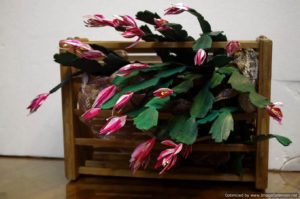
To make chan-hua, first of all, cut paper to the desired shape. Then, tie the silk thread to the paper and iron wire to form colorful parts. Finally, assemble those parts and make various well-meant and auspicious themes, such as flowers, pomegranates, butterflies, turtle and deer.
In 2010, the handcrafted flowers craft (chun-zi-hua) was registered in Yilan County’s lists of cultural assets. Artisan Chen Hui-mei has become the designated skill preserver. She has passed down the heritage learned from the respected Mrs. Xie Chen Ai-yu in northern Taiwan. Artisan Chen Hui-mei has kept Grandma Ai-yu’ chun-zi-hua skill and forms alive. At the same time, she creates the modern version of chun-zi-hua. Chun-zi-hua has reached the contemporary public, and from that standpoint, its existence has come to be valued.


